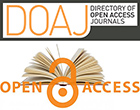THE IMPACT OF TOXICANTS IN THE MARINE THREE ECOLOGICAL FOOD-CHAIN ENVIRONMENT: A MATHEMATICAL APPROACH
Abstract
To explore the impact of toxicants on a marine ecological food chain system consisting of three species, this work develops and analyzes a non-linear mathematical model. The model consists of five state variables: phytoplankton, zooplankton, fish, environmental toxicant, and organismal toxicant. We have incorporated the Monod-Haldane functional response as a predation function for each species. Using the Jacobian matrix, the stability analysis was conducted, and necessary constraints were obtained for the system's local and global stability. Hopf bifurcation analysis was performed for carrying capacity (\(K\)) and the rate of decrease in the growth rate of phytoplankton due to the presence of toxicants (\(r_1\)). Also, phase portraits are presented for different parameters of the model. In addition, numerical simulations are executed using MATLAB to prove theoretical findings and explore the impact of parameter variation on ecological species behavior.
Keywords
Environmental toxicant, Marine food chain, Stability, Hopf-bifurcation, Lyapunov function
Full Text:
PDFReferences
- Alebraheem J. Predator interference in a predator-prey model with mixed functional and numerical responses. J. Math., 2023. Art. no. 4349573. DOI: 10.1155/2023/4349573
- Babu A.R., Misra O.P., Singh C., Kalra P. Model for the dynamical study of a three-species food-chain system under toxicant stress. Int. J. Sci. Res. Sci., 2015. Vol. 1, No. 2. P. 493–513.
- Babu A.R., Yadav K., Jadon B.P.S. The study of top predator interference on tri species with “food-limited” model under the toxicant environment: A mathematical implication. Liberte J., 2025. Vol. 13, No. 1. P. 20–35. DOI: 10.5281/zenodo.15878934
- Babu A.R., Gupta S., Rathaur N., Agarwal T., Sharma M. The effects of crowding and toxicant on biological food-chain system: a mathematical approach. Hilbert J. Math. Anal., 2024. Vol. 2, No. 2. P. 080–091. DOI: 10.62918/hjma.v2i2.24
- Das K., Srinivas M.N., Saikh A., Biswas Md.H.A. Impact of nanomaterial in the marine environment: through mathematical modelling by eco-path framework. Commun. Biomath. Sci., 2024. Vol. 7, No. 1. P. 148–161. DOI: 10.5614/cbms.2024.7.1.8
- Hallam T.G., de Luna J.T. Effects of toxicants on populations: A qualitative: Approach III. Environmental and food chain pathways. J. Theoret. Biol., 1984. Vol. 109, No. 3. P. 411–429. DOI: 10.1016/S0022-5193(84)80090-9
- Haque M., Ali N. Chakravarty S. Study of a tri-trophic prey-dependent food chain model of interacting populations. Math. Biosci., 2003. Vol. 246, No. 1. P. 55–71. DOI: 10.1016/j.mbs.2013.07.021
- Hallam T.G., Clark C.E., Jordan G.S. Effects of toxicants on populations: A qualitative approach II. First order kinetics. J. Math. Biol., 1983. Vol. 18. P. 25–37. DOI: 10.1007/bf00275908
- Liu Z., Tan R. Impulsive harvesting and stocking in a Monod–Haldane functional response predator-prey system. Chaos, Solitons & Fractals, 2007. Vol. 34, No. 2. P. 454–464. DOI: 10.1016/j.chaos.2006.03.054
- Liu W.M. Criterion of Hopf bifurcations without using eigenvalues. J. Math. Anal. Appl., 1994. Vol. 182, No. 1. P. 250–256. DOI: 10.1006/jmaa.1994.1079
- Misra O.P., Babu A.R. A model for the dynamical study of food-chain system considering interference of top predator in a polluted environment. J. Math. Model., 2016. Vol. 3, No. 2. P. 189–218.
- Misra O.P., Babu A.R. Modelling effect of toxicant in a three-species food-chain system incorporating delay in toxicant uptake process by prey. Model. Earth Syst. Environ., 2016. Vol. 2. Art. no. 77. P. 1–27. DOI: 10.1007/s40808-016-0128-4
- Majeed A.A., Kadhim A.J. The bifurcation analysis and persistence of the food chain ecological model with toxicant. J. Phys.: Conf. Ser., 2021. Vol. 1818, No. 1. Art. no. 012191. DOI: 10.1088/1742-6596/1818/1/012191
- Mandal A., Tiwari P.K., Pal S. Impact of awareness on environmental toxins affecting plankton dynamics: a mathematical implication. J. Appl. Math. Comput., 2021. Vol. 66. P. 369–395. DOI: 10.1007/s12190-020-01441-5
- Preston B.L., Snell T.W. Direct and indirect effects of sublethal toxicant exposure on population dynamics of freshwater rotifers: a modeling approach. Aquatic toxicology, 2001. Vol. 52, No. 2. P. 87–99. DOI: 10.1016/S0166-445X(00)00143-0
- Panja P., Mondal S.K., Jana D.K. Effects of toxicants on Phytoplankton–Zooplankton–Fish dynamics and harvesting. Chaos, Solitions & Fractal, 2017. Vol. 104. P. 389–399. DOI: 10.1016/j.chaos.2017.08.036
- Pal R., Basu D., Banerjee M. Modelling of phytoplankton allelopathy with Monod–Haldane-type functional response – A mathematical study. Biosystems, 2009. Vol. 95, No. 3. P. 243–253. DOI: 10.1016/j.biosystems.2008.11.002
- Smith G.M., Weis J.S. Predator-prey relationships in mummichogs (Fundulus heteroclitus L.): Effects of living in a polluted environment. J. Exp. Marine Biol. Ecol., 1997. Vol. 209, No. 1–2. P. 75–87. DOI: 10.1016/S0022-0981(96)02590-7
- Thakur N.K., Ojha A., Jana D., Upadhyay R.K. Modeling the plankton-fish dynamics with top predator interference and multiple gestation delays. Nonlinear Dyn., 2020. Vol. 100. P. 4003–4029. DOI: 10.1007/s11071-020-05688-2
- Talib R.H., Helal M.M., Naji R.K. The dynamics of the aquatic food chain system in the contaminated environment. Iraqi J. Sci., 2022. Vol. 63, No. 5. P. 2173–2193. DOI: 10.24996/ijs.2022.63.5.31
- Yadav K., Babu A.R., Jadon B.P.S. Mathematical implications of the effect of toxicants and distributed delay on tri-trophic food chain model. J. Syst. Eng. Electron., 2024. Vol. 34, No. 12. P. 582–597. DOI: 10.5281/zenodo.14563265
- Zhang P., et al. Effect of feeding selectivity on the transfer of methylmercury through experimental marine food chains. Mar. Environ. Res., 2013. Vol. 89. P. 39–44. DOI: 10.1016/j.marenvres.2013.05.001
Article Metrics
Metrics Loading ...
Refbacks
- There are currently no refbacks.













